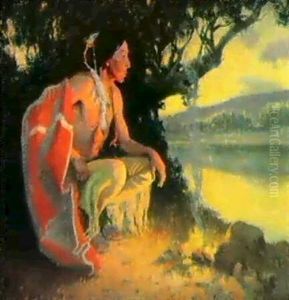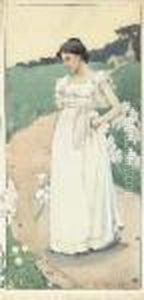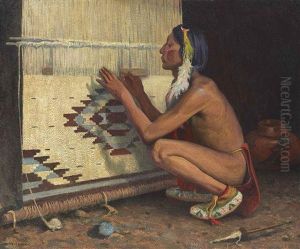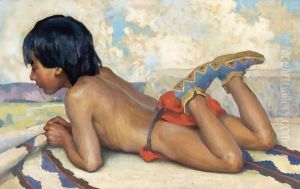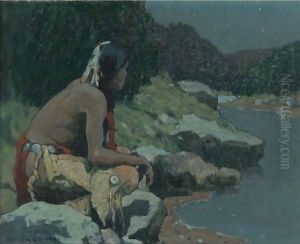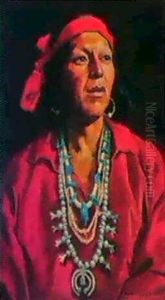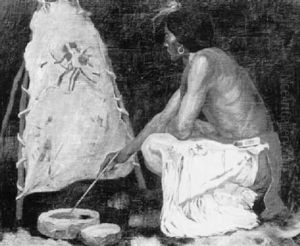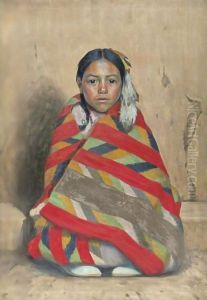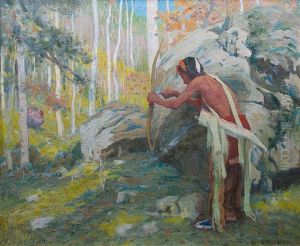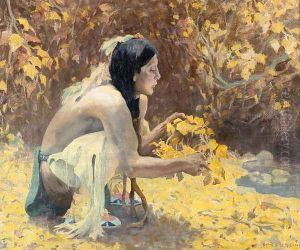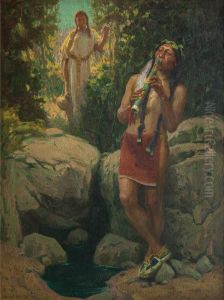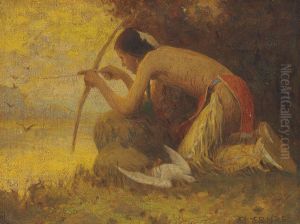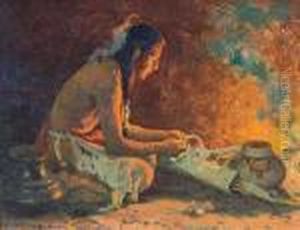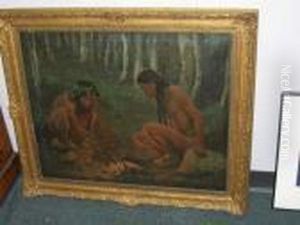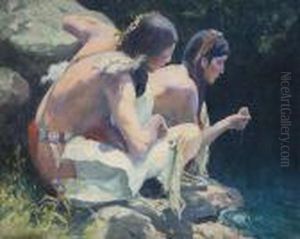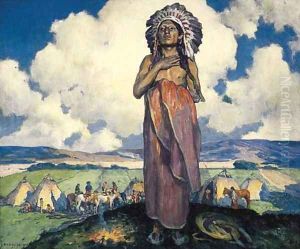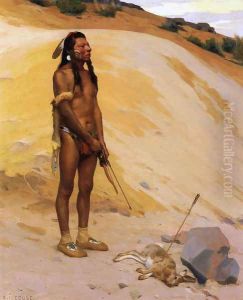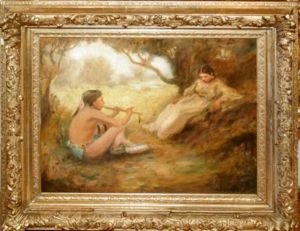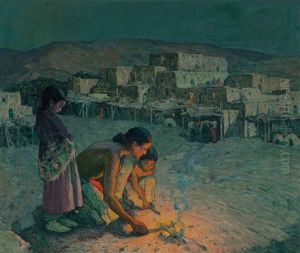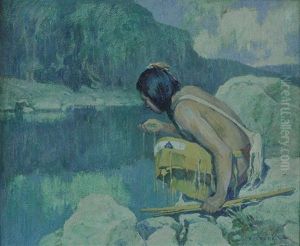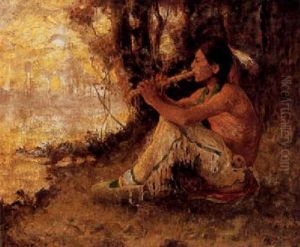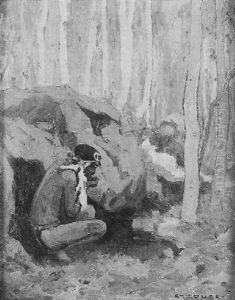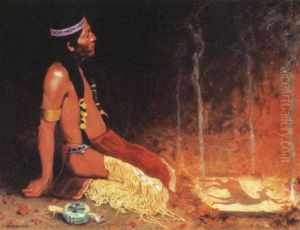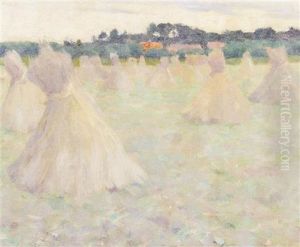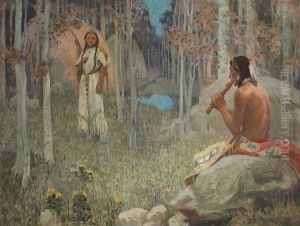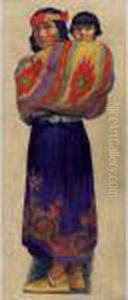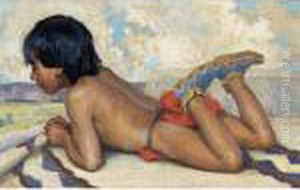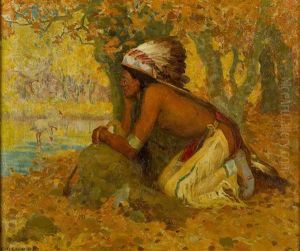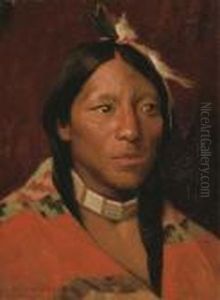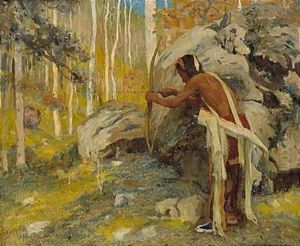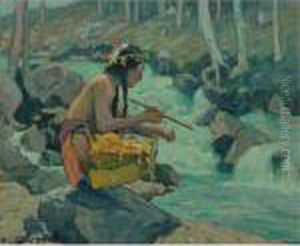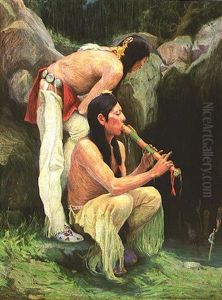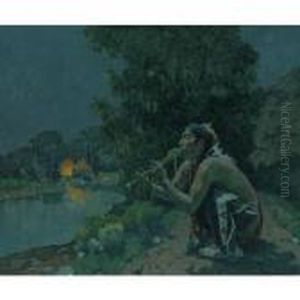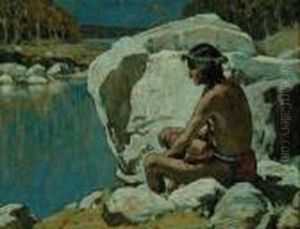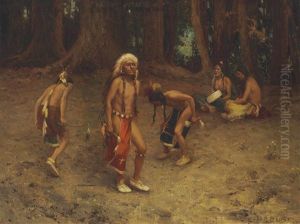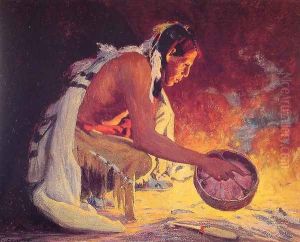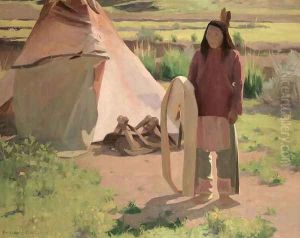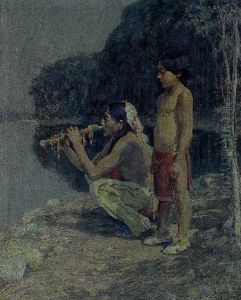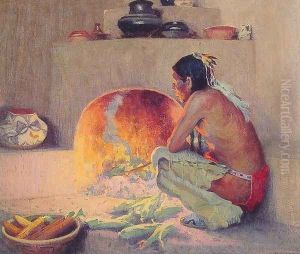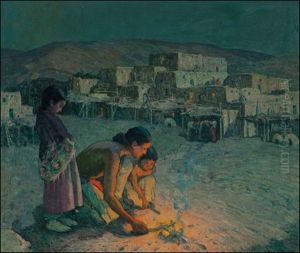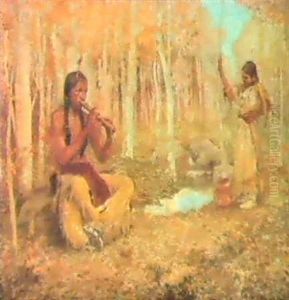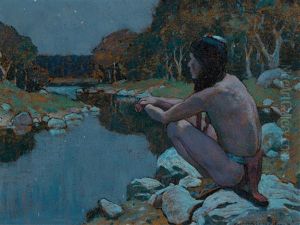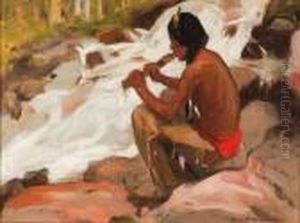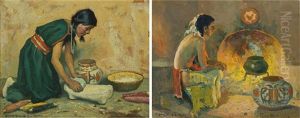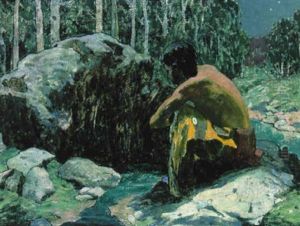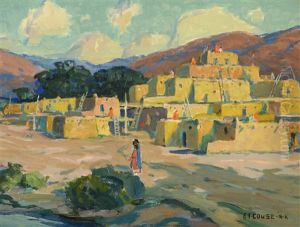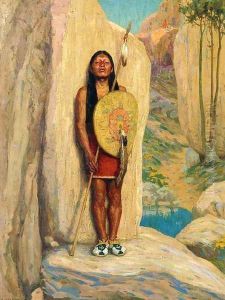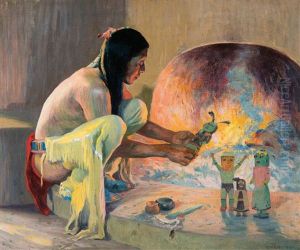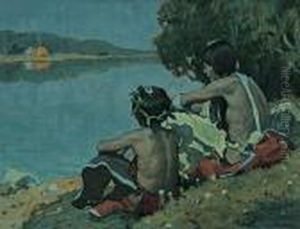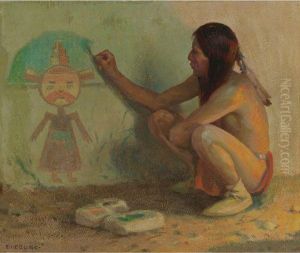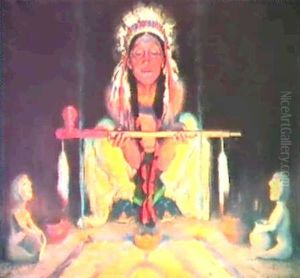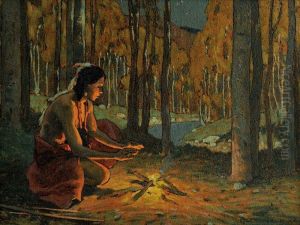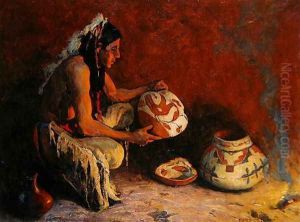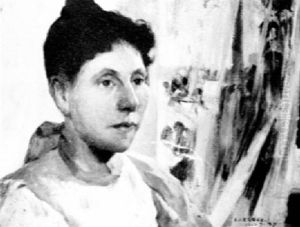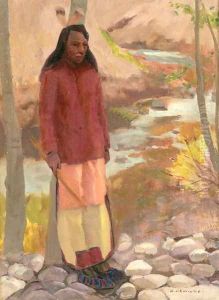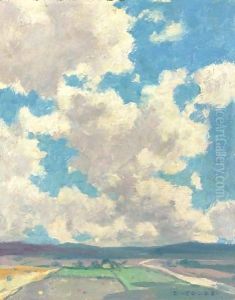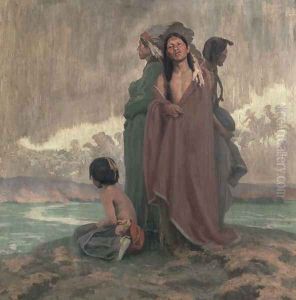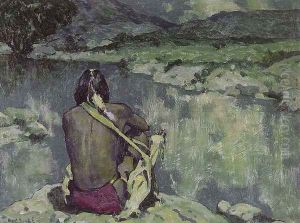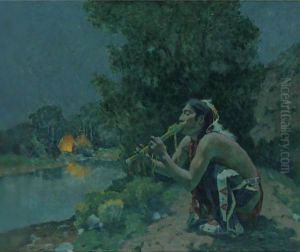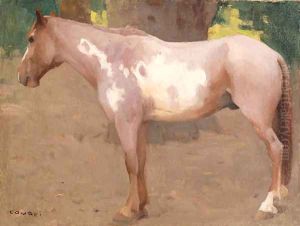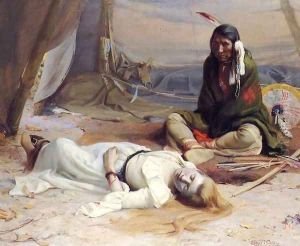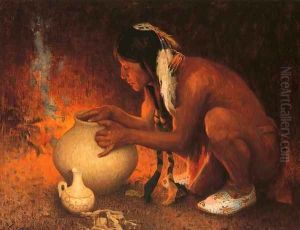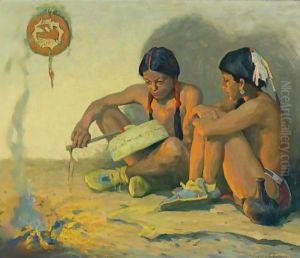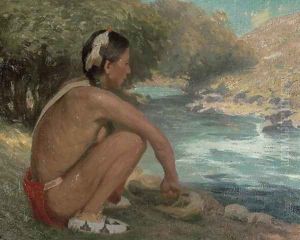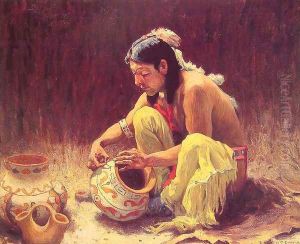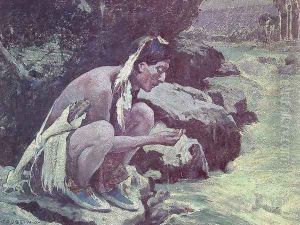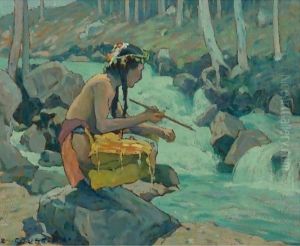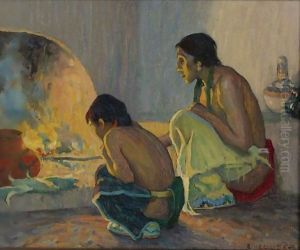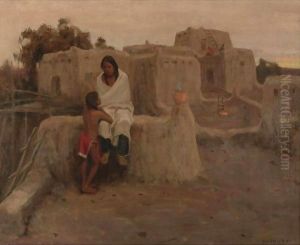Eanger Irving Couse Paintings
Eanger Irving Couse was an American artist born on September 3, 1866, in Saginaw, Michigan. He was particularly known for his beautiful portrayals of Native American people and cultures, especially the Taos Pueblo tribe. Couse was one of the founding members of the Taos Society of Artists, a collective that played a significant role in American art by showcasing the life and landscapes of the American Southwest.
Couse's artistic journey began early in his life. He displayed a natural talent for drawing and painting, which led him to study at the Art Institute of Chicago. Yearning for more comprehensive training, he moved to Paris, where he attended the prestigious Académie Julian. There, he was taught by notable French artists such as William-Adolphe Bouguereau and Tony Robert-Fleury. During his time in Paris, Couse absorbed the influences of French academic painting and was exposed to the works of the European masters.
In 1889, Couse married Virginia Walker, with whom he later had a son. After spending several years in France, where he honed his skills and started a family, Couse returned to the United States. He spent time in the Pacific Northwest, where he first encountered Native American subjects. This experience had a profound impact on his work, leading him to develop a deep respect and fascination for Native American cultures.
Eventually, Couse settled in Taos, New Mexico, in 1902. The unique light and vibrant culture of the region inspired him greatly. In Taos, he became particularly close to the Taos Pueblo community, gaining their trust and the permission to depict them in his art. His paintings often featured serene, idealized, and dignified representations of Native Americans engaged in traditional activities, using a style that blended realism with a certain romantic quality.
In 1915, Couse was among the six founding members of the Taos Society of Artists. The society's purpose was to express the distinctive qualities of the Southwest and to bring attention to the art created in the region. Couse served as the president of the society several times and his work, along with that of his colleagues, was instrumental in bringing the art and culture of the Southwest to a national and international audience.
Throughout his career, Couse's work was widely exhibited and received numerous awards. His paintings are characterized by their careful composition, attention to detail, and use of light and shadow. He was particularly skilled in capturing the textures of skin, clothing, and the natural environment.
Eanger Irving Couse passed away on April 26, 1936, in Taos, New Mexico. His legacy lives on through his art, which continues to be appreciated for its beauty and cultural significance. His paintings can be found in many major museums and collections across the United States, including the Smithsonian American Art Museum, the Metropolitan Museum of Art, and the Gilcrease Museum.
